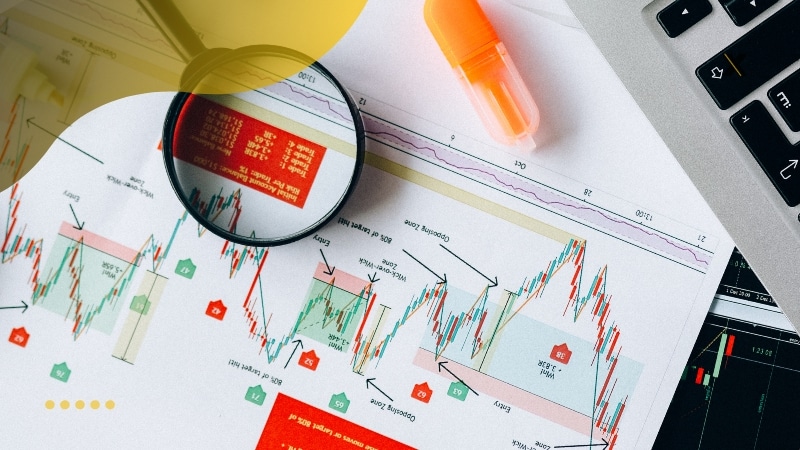Advertisements
Understanding how to do the global economic analysis is essential for those who want to invest in the right way. The world is increasingly connected, so changes that happen on the other side of the planet impact your results.
Our focus today is to show you the importance of global economic analysis, as well as the main indicators that will help you make this analysis, even strategies to protect and grow your wealth.
Thus, you will perfectly understand global economic analysis, helping you identify risks, opportunities, and trends that shape the present and future of the world economy.
The importance of global economic analysis

In a world where everything is interconnected, understanding only what happens in the national market is not enough. Today, any change in a developed country can directly impact your investments.
That is why global economic analysis has become an indispensable tool. Thus, it can identify risks, anticipate crises, and see opportunities in times of instability.
A good example is that of a financial advisor who follows international trends and notices signs of crisis in a nation. Thus, he can act before the impact reaches his clients’ portfolios, protecting investments and avoiding losses.
On the other hand, this analysis also shows where the great chances of growth are. This was the case with those who observed the rise of China and bet on strategic sectors before they became a global trend. With a careful reading of indicators, demographics, and political decisions, these investors came out ahead and had great results.
Thus, it is clear that ignoring the international scenario is an unnecessary risk. After all, everything that happens in the world, whether it’s a war, a change in interest rates, or a new economic policy will affect the American economy.
Economic indicators and their significance (Global economic analysis)
If you want to make more conscious financial decisions, you need to understand how the economy is doing, and that’s where economic indicators come in. They work as signals that show whether the economy is growing, stagnating, or facing problems.
This data helps predict trends and assess risks. Therefore, knowing the main indicators makes all the difference. Let’s look at some of the most important ones:
- GDP (Gross Domestic Product): shows how much the economy produced in a period. When it grows, it is a sign that the country is developing.
- Unemployment rate: reveals how many people are out of work. A high number indicates difficulties in the economy.
- CPI (Consumer Price Index): measures inflation. When it rises too much, purchasing power falls.
- Interest rates: These directly affect your loans and investments. High interest rates discourage consumption, while low interest rates encourage it.
- Manufacturing and Industrial Production: indicate the pace of activity in industries. They are great thermometers of economic growth.
- Consumer Confidence Index: shows how people are feeling about the economy. The greater the confidence, the more consumption tends to grow.
Knowing how to interpret these signals helps you understand the scenario in which you are inserted and better plan your next steps, whether to save, invest, or even undertake.
Investment Options

If you are starting to invest or want to diversify your portfolio, you must understand the main options available in the market. There are alternatives for different profiles and objectives, from the safest to the boldest investments. Let’s get to know some?
1. Fixed income securities
These are investments that offer lower risk and a predictable return. Ideal for those seeking security and stability. Among the most common options are:
- Treasury Bonds (T-bonds): securities issued by the U.S. government;
- Corporate Bonds: are debt securities issued by companies;
- Certificate of Deposit (CD) are issued by banks;
- Fixed income ETFs: These are funds that invest in a basket of securities, including American fixed income. are a good option for diversification.
2. Actions (Global economic analysis)
For those looking for greater profitability and are willing to take more risks, stocks are an excellent choice. It works like this, you become a partner in companies and participate in the profits. Check out some that have stood out:
- Market giants: Amazon, Coca-Cola, Google and Nike are consolidated companies with great potential for even greater growth.
- Other options on the rise: Harmony Biosciences (HRMY), International Seaways Inc (INSW), White Mountain Insurance (WTM) and Danaos Corporation (DAC). These companies have shown good performance and draw the attention of attentive investors.
Regardless of the asset you choose to invest in, we recommend that you look for good investment brokers, such as Binance and Fidelity Investments.
Risk Management in Changing Economies
The only certainty in the financial market is instability and in these moments, those who know how to manage risks come out ahead. After all, protecting what you have already achieved is as important as seeking new gains.
One of the most used strategies is the stop-loss order, which serves to limit losses. Basically, you set a minimum amount to sell an asset in case it starts to fall. This prevents a bigger drop from taking you by surprise and compromising your equity.
Another tip is diversification. Spreading your investments across different assets, sectors, and even countries reduces risks. If one side of the wallet suffers, another can compensate. But before you start investing, you need to make sure your economic life is organized, we recommend that you follow the key tips for financial growth.
Monitoring of economic trends and investment portfolios
Investing is not something you do once and forget. To have good results, you need to follow what is happening in the market and understand how it affects your investments.
Pay attention to the indicators, especially inflation, interest rates, and GDP growth. When you stay informed, you can make adjustments at the right time, increasing your results and, above all, avoiding losses.
Conclusion (Global economic analysis)
Based on all the aspects we covered, he was able to understand the process to make a global economic analysis.
It all starts with the analysis of indicators such as GDP, inflation, interest rates and consumer confidence. In this way, you gain a clear view of the world scenario and make safer decisions.
In addition, knowing the investment options, from fixed income securities to stocks, allows you to build a balanced and strategic portfolio.
Allied to this, applying risk management techniques and keeping constant monitoring of economic trends will make you always be able to make the best decisions to invest your money.




